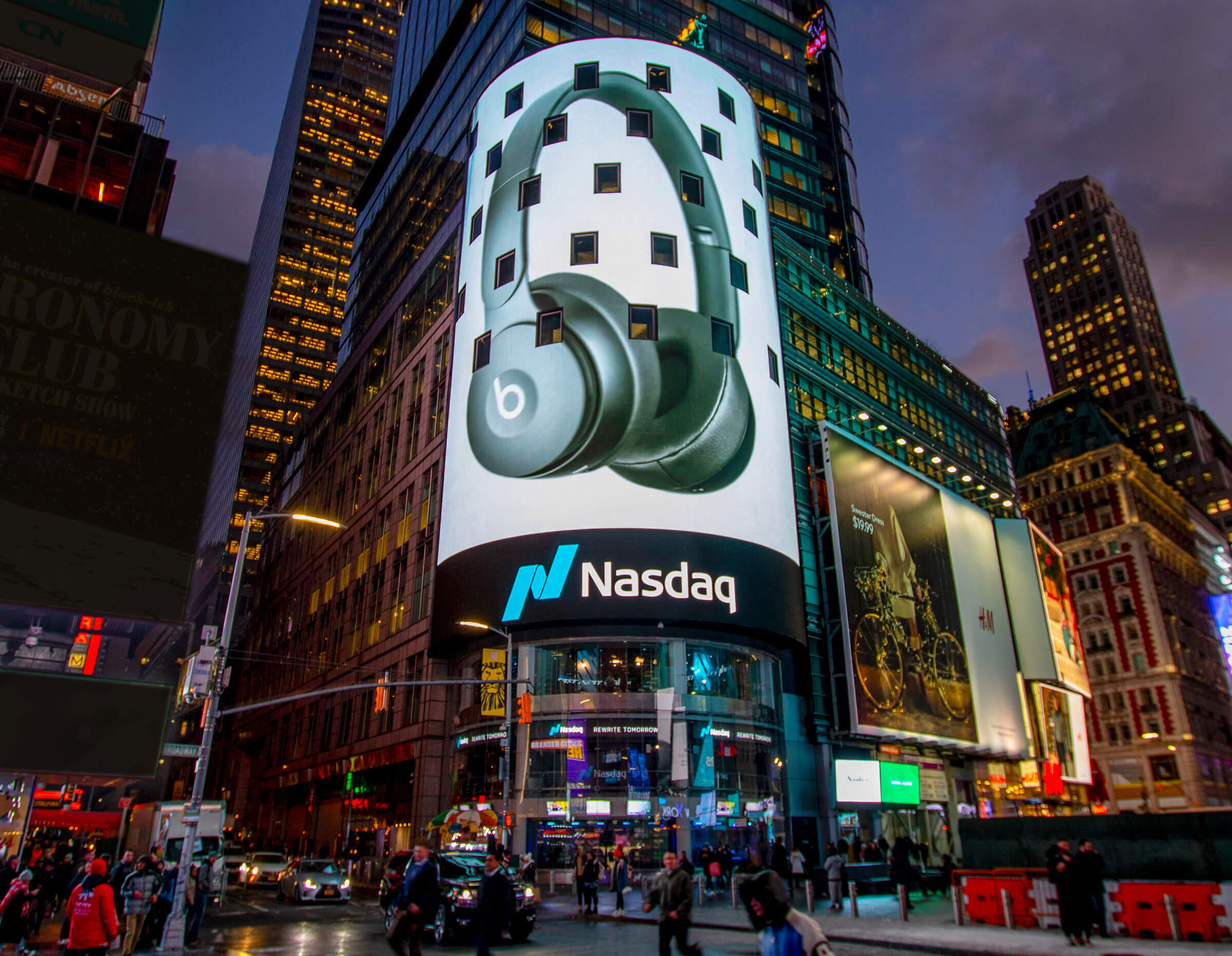In an age dominated by digital marketing, the effectiveness of offline advertising poses a fascinating question.
If you’re a skeptic who believes that offline advertising is a relic of the past, think again. After all, reputable brands wouldn’t be doing it if it didn’t work.
In this article, we’ll go through some current examples of how offline advertising still has a place in today’s marketing world.
What Do We Mean by Offline Advertising?
We’re not talking about offline conversions commonly featured in most social and paid media platforms. We’re talking about old-school traditional marketing material.
Offline ads are traditional forms of advertising that don’t live on a digital platform. That could mean billboards on the highway, posters in the subway, those full-page spreads in magazines, and even the radio jingles you hate to love (or love to hate?).
They’re the kind of ads that you encounter when you’re out living your life in the “real world,” away from the screens. Don’t tell me you could ignore a billboard like this:

These ads may seem like dinosaurs in the age of digital marketing, but they’re actually far from extinct. Whether it’s because they catch our eye while we’re stuck in traffic or provide some food for thought as we wait for our flights at the airport, offline ads still manage to connect with us in a world increasingly dominated by online interactions.
Where Do You Use Offline Advertising?
Remember when you last dashed through an airport and saw those billboards emblazoned with HSBC or some cryptocurrency exchange?

Did it ever make you wonder if such an advertising approach is effective? Well, it is:
- 73% of frequent fliers say they take the time to read airport advertising messages.
- 83% notice airport advertising with 3/4 associating airport advertising with high-quality brands.
So, what’s the secret sauce? you might ask.
Well, it comes down to a simple yet profound marketing principle – know where your target audience is present:
- If your target audience is primarily college-age individuals, then universities would be the perfect placement for an ad.
- If your target audience does a lot of air travel, then the airport is your best bet for your ads.
- If your target audience consists mainly of fitness enthusiasts, then gyms and health clubs would be ideal locations for your advertisements.
- If your target audience is parents with young children, then placing your ads in daycare centers or pediatrician offices would be highly effective.
So much of knowing what placement will garner the most qualitative attention is in knowing the space where your audience frequents.
From Billboards to Digital Spaces
So does this conversion power extend beyond airport terminals and highways?
Offline advertising, contrary to what some may think, is far from defunct. Instead, it’s evolving and merging into the digital landscape. Take digital billboards, for instance. These are the next-gen offline ads that can be purchased online, allowing businesses to get the best of both worlds.
New York’s Time Square is a perfect example of digital billboards:

But you can also find these digital billboards, or digital signage, on bus shelters, doctors’ offices or other professional offices…

Gas station pumps and more…

The idea here isn’t to ignite a war between online and offline advertising; rather, it’s to stress that conversion is the key metric in both realms. It’s essential to note that not all ads will work equally well, irrespective of the medium. Success hinges on multiple variables: target audience, creative design, location and, of course, price tag.
Have you ever scrolled through your social feed and stumbled upon an ad that seemed vaguely familiar? Maybe you shrugged it off, thinking déjà vu’s playing tricks on you. But then, as you drive down the highway or hop on a train, you see the same ad. You do a double take.
That moment, folks, is the essence of a well-executed blend of offline and online advertising. The overlap isn’t coincidental — it’s orchestrated. It’s also called omnichannel marketing:

When the same message or branding captures someone’s attention in both the digital landscape and the real world, it triggers a sense of familiarity. The consumer is left thinking, “Hmm, if these guys are everywhere, they must be legitimate.” And that’s when they start to regard your brand as credible.
Don’t Let AI Dictate Your Offline Advertising Strategy
If you can use AI to help you create digital content, why shouldn’t you use it to create offline content?
Here’s why you shouldn’t.
While AI can do wonders for your campaign, there’s also a downside. Many businesses are falling into the trap of Me Too campaigns — no, not the recent social movement, but the phenomenon where ads tend to blend into the crowd due to the generic use of AI tools.
It’s like playing a round of ‘Where’s Waldo?’ where every character looks like Waldo. You don’t want your campaign to be a part of the blur, do you?
That’s why it’s crucial to apply original creativity to any offline advertising campaigns that you attempt.
Not only that, but digital content is easier to adjust. A published blog piece can be changed and an AI-assisted social media post can be rewritten. All of that is harder to do with tangible marketing assets. (And by harder, we mean impossible unless you have them remade or reprinted from scratch.)
In the end, traditional marketing assets ought to be given more thoughtful, organic attention than you would your normal, periodic online content, largely for the reason that traditional marketing is a lot more difficult to manipulate during a campaign.
Last Words on Offline Advertising
So, does offline advertising work? It absolutely can, but with these caveats:
- Know Your Audience: Target the spaces where your potential customers hang out. If they’re business travelers, you know where to find them.
- Conversion Is King: The medium may change, but the metric stays the same. Aim for a high conversion rate, whether it’s digital or offline.
- Get Creative: Whether you’re targeting IT experts or stay-at-home parents, creativity goes a long way. Use storytelling to break through the monotony.
- Beware the AI Trap: Unique campaigns and content stand out. Don’t let AI tools dictate a generic campaign that blends into the background.
To sum it up, offline advertising is far from outdated; it’s simply evolving.
So, the next time you spot an ad at the airport or anywhere else, maybe give it a second glance. Who knows, you might just find yourself inspired to rethink your own marketing strategy!
If you’re ready to level up your ad campaigns (with or without AI), Single Grain’s paid ads experts can help!👇
For more insights and lessons about marketing, check out our Marketing School podcast on YouTube.






